An artist's surreal view of Australia – created from satellite data captured 700km above Earth
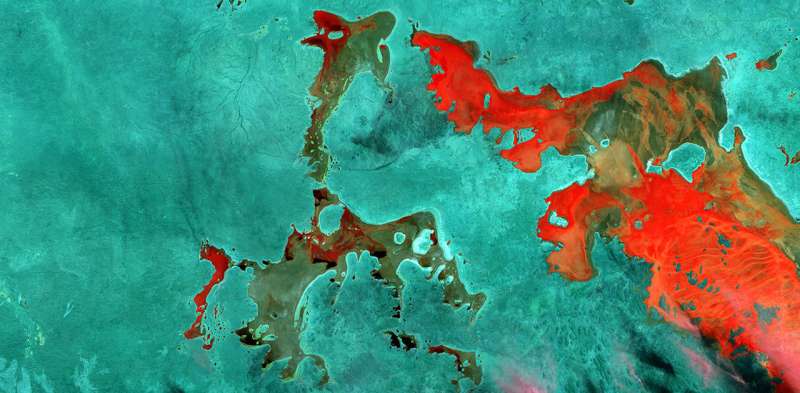
There are more than orbiting Earth. They bristle with sensors – trained towards Earth and into space – recording and transmitting many different wavelengths of electromagnetic radiation.
Governments and media corporations rely on the data these satellites collect. But artists use it too, as a new way to image and view the Earth.
I work with and the "" platform to produce time-lapse images and video of Australian landforms using satellite data.
My Open Air project, produced through a collaboration with Australian painter and the music of , features macro-photography of Emma Walker's paintings set against time-lapse satellite imagery of Australia.
Open Air will be in Canberra on September 20, 2018.
Open access to satellite data
We see satellites as moving pin-pricks in the night sky, or occasionally – as with the recent return to Earth of the Chinese Tiangong space station – as streaks of light. And most us would have heard about satellite data being used for surveillance, for GPS tracking and for media broadcasting.
But artists can divert satellite data away from a purely instrumental approach. They can apply it to produce new ways of seeing, understanding and feeling the Earth.
Of course satellites are expensive to launch and maintain. The main players are either powerful corporate providers like , enormous public sector agencies like and the European Space Agency (ESA), or with links to these groups.
Luckily, many of these agencies make their data freely available to the public.
The NASA/US Geological Survey makes 40 years of Earth imaging data available through . The ESA provides data from their Sentinel satellites to users of the .
In Australia, Geoscience Australia's platform provides researchers and the public with access to Australian satellite data from a range of agencies.
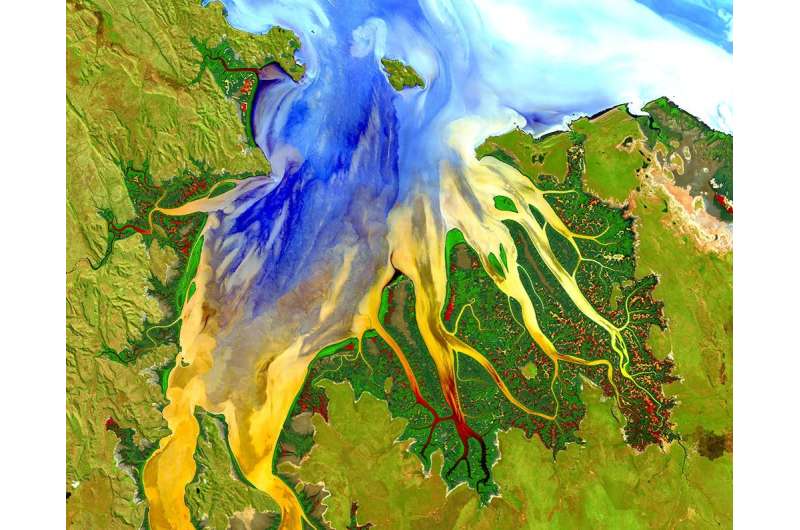
Understanding and processing the data
Making satellite imaging data accessible, though, is not the same thing as making it usable. There is considerable technical know-how required to process satellite data.
The Landsat and Sentinel satellites are used by scientists and the private sector to monitor environmental change over time, using what is known as "remote sensing". They travel in the range, around and circle the Earth in around 90 minutes. After numerous orbits, they return to the exact same spot every 16 days.
Landsat and Sentinel satellites are equipped with sensors that record reflected electromagnetic radiation in a . Some of these wavelengths fall within the visible light part of the spectrum (between 390-700 nanometers). In that sense, satellites image the Earth in a way comparable to a digital camera.
But the satellites also record other wavelengths, particularly in the near and shortwave infrared range. Vegetation, water and geological formations reflect and absorb infrared light differently to visible light. Recording these wavelengths allows scientists to track, for instance, changes in vegetation density or that indicate drought, flood or fire.
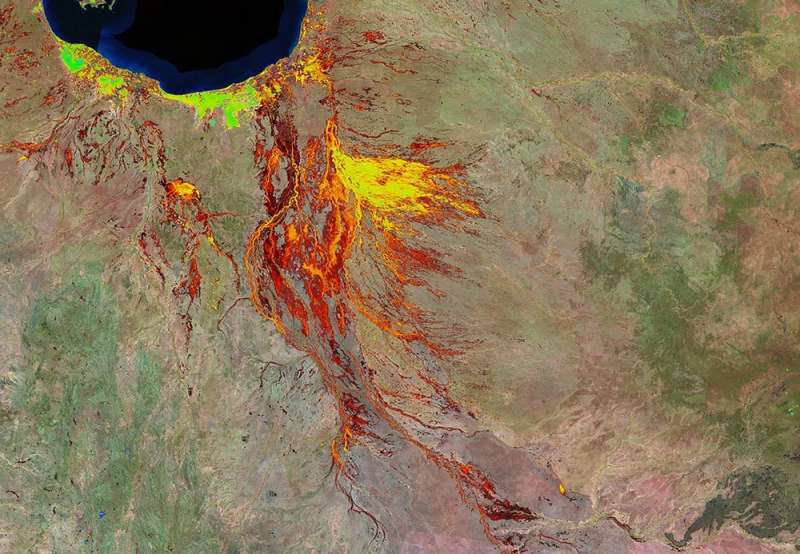
A single satellite image is made up of numerous bands recording data in very specific wavelengths. Getting a full-colour image requires processing in a to combine them, and assign the bands to either red, green or blue in an output image.
Bringing creativity to the data
This is where creativity can enter the picture. Being able to create false colour images that combine infrared and visible light in different ways allows me to produce beautifully surreal images of Australian landforms.
The image below shows the variance in environmental conditions over 12 months in 2016 at the Stirling Range National Park in WA.
Because geoscientists need clear images of the earth's surface to analyse, they filter clouds from the data. I chose to take the opposite approach, highlighting the incredible array of meteorological conditions experienced by the country.
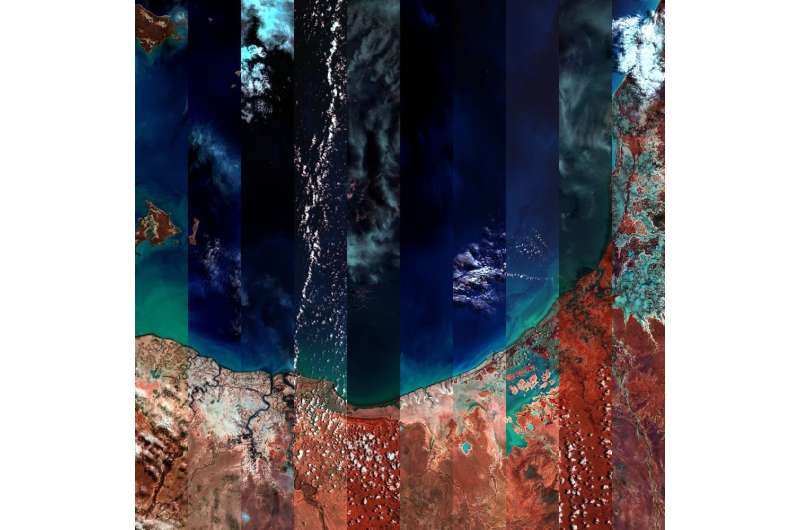
There are many other artists working with satellite data. Clement Valla's focuses on glitches in Google's mapping algorithm, and bio-artist uses satellite imaging to produce extruded 3-D environments in petri dishes.
Working with the Nevada Museum of Art, photographer Trevor Paglen will launch the satellite as an inflatable, visible sculpture, a prompt for wonder and reflection.
Artists place satellite data and usage in new contexts. They question surveillance practices and expose scientific tools and representations to new audiences outside science and the private sector.
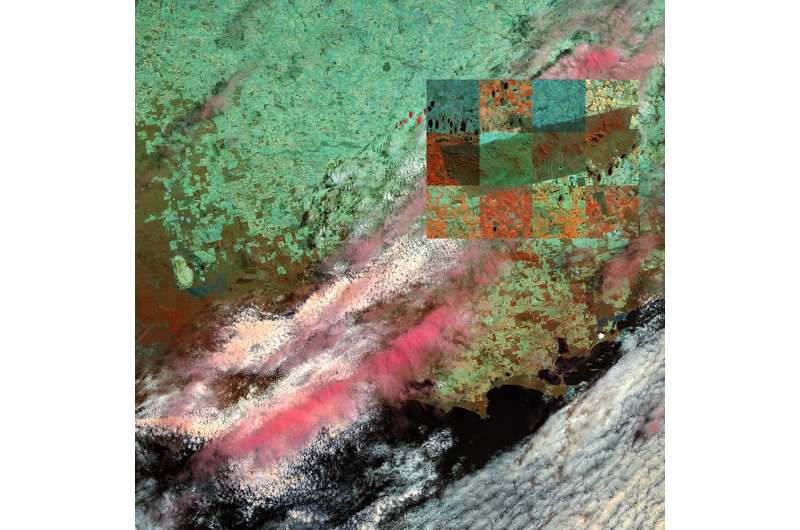
The thousands of satellites winging their way around the Earth represent power and possibility, a chance to look again at the intersection between humankind and a changing planet.
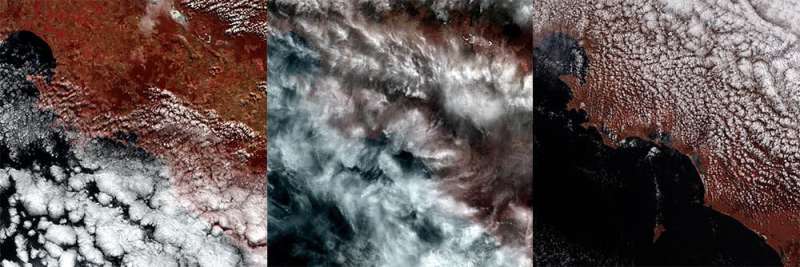
Provided by The Conversation
This article is republished from under a Creative Commons license. Read the .![]()



















